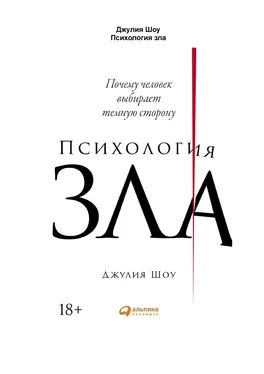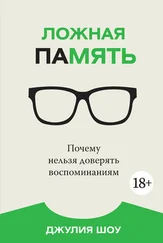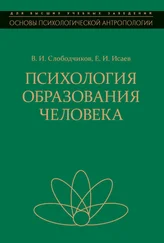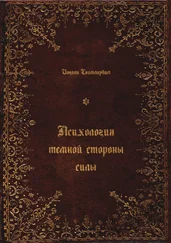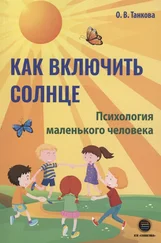Perry, S. L., & Schleifer, C. ‘Till porn do us part? A longitudinal examination of pornography use and divorce’. Journal of Sex Research (2017), pp. 1-13.
Perry, S. L. ‘Pornography consumption as a threat to religious socialisation’. Sociology of Religion, 76 (4) (2015), pp. 436-58.
Wright, P. J., Tokunaga, R. S., & Kraus, A. ‘A meta-analysis of pornography consumption and actual acts of sexual aggression in general population studies’. Journal of Communication, 66 (1) (2016), pp. 183-205.
Kühn, S., & Gallinat, J. ‘Brain structure and functional connectivity associated with pornography consumption: the brain on porn’. JAMA Psychiatry, 71 (7) (2014), pp. 827-34.
Moran, C., & Lee, C. ‘What’s normal? Influencing women’s perceptions of normal genitalia: an experiment involving exposure to modified and nonmodified images’. BJOG: An International Journal of Obstetrics & Gynaecology, 121 (6) (2014), pp. 761-66.
Hesse, C., & Pedersen, C. L. ‘Porn sex versus real sex: how sexually explicit material shapes our understanding of sexual anatomy, physiology, and behaviour’. Sexuality & Culture, 21 (3) (2017), pp. 754-75.
Carroll, A. & Mendos, L. R., International Lesbian, Gay, Bisexual, Trans and Intersex Association. State-Sponsored Homophobia 2017: A World Survey of Sexual Orientation Laws: Criminalisation, Protection and Recognition; http://ilga.org/what-we-do/state-sponsored-homophobia-report/.
Sweeney, J. ‘Sochi 2014: No gay people in city’. Interview with Anatoly Pakhomov for BBC Panorama, 27 January 2014; http://www.bbc.com/news/uk-25675957.
Gates, G. J. ‘How many people are lesbian, gay, bisexual and transgender?’ The Williams Institute, UCLA School of Law (2011); https://escholarship.org/content/qt09h684x2/qt09h684x2.pdf.
Duncan, P ‘Gay relationships are still criminalised in 72 countries, report finds’. The Guardian, 27 July 2017; https://www.theguardian.com/world/2017/jul/27/gay-relationships-still-criminalised-countries-report.
Sanders, A. R., Martin, E. R., Beecham, G. W., Guo, S., . . . & Duan, J. ‘Genome-wide scan demonstrates significant linkage for male sexual orientation’. Psychological Medicine, 45 (7) (2015), pp. 1379-88.
Coghlan, A. ‘Largest study of gay brothers homes in on “gay genes”’. New Scientist, 17 November 2014; https://www.newscientist.com/article/dn26572-largest-study-of-gay-brothers-homes-in-on-gay-genes/.
Adams, H. E., Wright, L. W., & Lohr, B. A. ‘Is homophobia associated with homosexual arousal?’ Journal of Abnormal Psychology, 105 (3) (1996), p. 440.
Wagner, G. J. ‘Internalised homophobia scale’. In: Handbook of Sexuality-Related Measures, Clive Davis, William Yarber et al. Thousand Oaks, CA: SAGE Publications, 1998, pp. 371-72.
Tskhay, K. O., & Rule, N. O. ‘Internalised homophobia influences perceptions of men’s sexual orientation from photos of their faces’. Archives of Sexual Behavior, 46 (3) (2017), pp. 755-61.
Alarie, M., & Gaudet, S. ‘“I don’t know if she is bisexual or if she just wants to get attention”: analyzing the various mechanisms through which emerging adults invisibilise bisexuality’. Journal of Bisexuality, 13 (2) (2013), pp. 191-214.
Herek, G. M. ‘Heterosexuals’ attitudes toward bisexual men and women in the United States’. Journal of Sex Research, 39 (4) (2002), pp. 264-74.
de Zavala, A. G., Waldzus, S., & Cypryanska, M. ‘Prejudice towards gay men and a need for physical cleansing’. Journal of Experimental Social Psychology, 54 (2014), pp. 1-10.
LaCour, M. J., & Green, D. P ‘When contact changes minds: an experiment on transmission of support for gay equality’. Science, 346 (6215) (2014), pp. 1366-69.
Williams, C. J., & Weinberg, M. S. ‘Zoophilia in men: a study of sexual interest in animals’. Archives of Sexual Behavior, 32 (6) (2003), pp. 523-35.
Sangeeta, S. ‘Health risks of zoophilia/bestiality’. Journal of Biological and Medical Sciences, 1 (1) (2017), e101.
Kennedy, A. C., & Prock, K. A. ‘“I still feel like I am not normal”: a review of the role of stigma and stigmatisation among female survivors of child sexual abuse, sexual assault, and intimate partner violence’. Trauma, Violence, & Abuse (November 2016); https://doi.org/10.1177/1524838016673601.
Blakemore, T., Herbert, J. L., Arney, F., & Parkinson, S. ‘The impacts of institutional child sexual abuse: a rapid review of the evidence’. Child Abuse & Neglect, 74 (2017), pp. 35-48.
McCartan, K. ‘“Here There Be Monsters”: the public’s perception of paedophiles with particular reference to Belfast and Leicester’. Medicine, Science and the Law, 44 (4) (2004), pp. 327-42.
Jahnke, S., Imhoff, R., & Hoyer, J. ‘Stigmatisation of people with pedophilia: two comparative surveys’. Archives of Sexual Behavior, 44 (1) (2015), pp. 21-34.
Wurtele, S. K., Simons, D. A., & Moreno, T. ‘Sexual interest in children among an online sample of men and women: prevalence and correlates’. Sexual Abuse, 26 (6) (2014), pp. 546-68.
American Psychiatric Association. Diagnostic and Statistical Manual of Mental Disorders (4th ed.). Washington, DC: APA, 2000.
Sea, J., & Beauregard, E. ‘The hebephiliac: pedophile or teleiophiliac?’ International Journal of Offender Therapy and Comparative Criminology (2017); https://doi .org/10.1177/0306624X17723627.
Bailey, J. M., Hsu, K. J., & Bernhard, P A. ‘An internet study of men sexually attracted to children: sexual attraction patterns’. Journal of Abnormal Psychology, 125 (7) (2016), p. 976.
McPhail, I. V., Hermann, C. A., Fernane, S., Fernandez, Y M., . . . & Cantor, J. M. ‘Validity of phallometric tests for sexual interests in children: a meta-analytic review’. Assessment (2017), pp. 1-17.
Birrell, I. ‘Horror of senior detective’, Daily Mail, 21 June 2015; http://www.dailymail.co.uk/news/article-3132896/Horror-senior-detective-discovering-1-35-men-sexually-attracted-children.html.
Birrell, ‘Horror of senior detective’.
Stephenson, W. ‘How many men are paedophiles?’, BBC News, 30 July 2014; http://www.bbc.co.uk/news/magazine-28526106.
Stoltenborgh, M., Van Ijzendoorn, M. H., Euser, E. M., & Bakermans-Kranenburg, M. J. ‘A global perspective on child sexual abuse: meta-analysis of prevalence around the world’. Child Maltreatment, 16 (2) (2011), pp. 79-101.
McLeod, D. A. ‘Female offenders in child sexual abuse cases: a national picture’. Journal of Child Sexual Abuse, 24 (1) (2015), pp. 97-114.
Bailey et al. ‘An internet study’.
Читать дальше
Конец ознакомительного отрывка
Купить книгу
